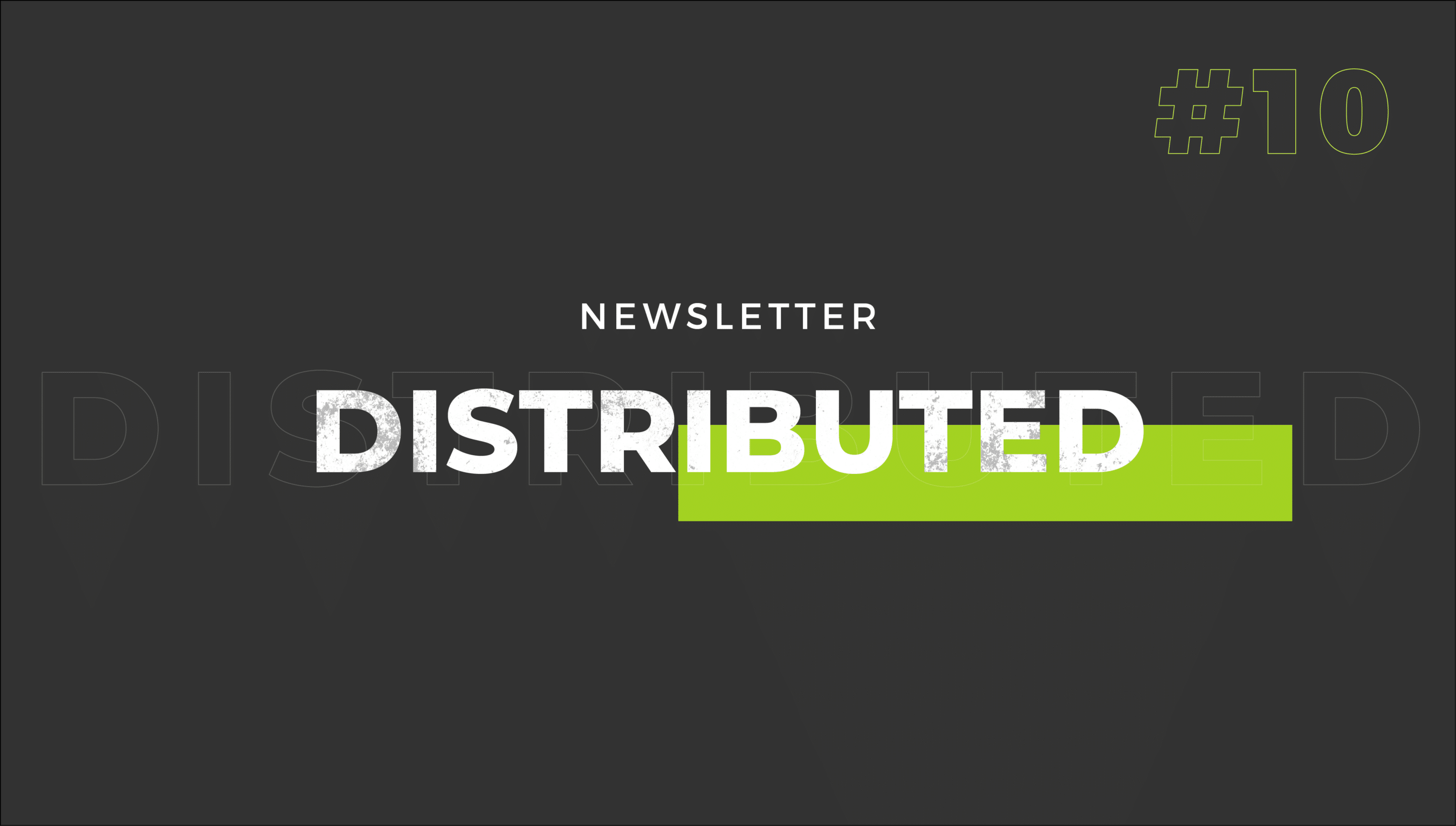If you’re new to digital marketing or have been out of the loop for a bit, the industry’s jargon can be perplexing. From acronyms to odd terminology, it can be hard to understand what all these phrases mean.
Before you enter the pit of hopelessness, we’ve compiled our list of top digital marketing terms into a helpful dictionary. We attempt to stick to these definitions to educate our clients and teammates about digital marketing. Doing so allows us to stay on the same page on when it comes to digital marketing vocabulary.
We’ll divide these terms into three groups: one defining general marketing concepts that apply universally, one concentrating on tools and methods unique to digital marketing, and one explaining the different metrics that we measure to determine how our marketing is performing.
Full List of Terms
- A/B Testing
- Alt Text
- Application Programming Interface
- Awareness
- Black Hat SEO
- Bounce Rate
- Buyer Persona
- Buyer’s Journey
- Channel
- Click-through Rate (CTR)
- Click-to-open Rate (CTOR)
- Closed-loop Marketing (CLM)
- Competitor
- Contact
- Content Strategy
- Conversion Rate (CR)
- Conversion Rate Optimization (CRO)
- Cost Per Acquisition (CPA)
- Cost Per Lead (CPL)
- Customer Lifetime Value (CLTV or LTV)
- Demand Generation (Demand Gen)
- Demand Side Platform
- Email Automation
- Featured Snippet
- Header Tag (H1, H2, H3, etc.)
- Heatmap
- Inbound Marketing
- Keyword
- Landing Page (LP)
- Lead
- Lead Score
- Lead Scoring
- Marketing Analytics
- Marketing Automation
- Marketing Funnel
- Marketing Qualified Leads (MQLs)
- Mobile Optimization
- Open Rate (OR)
- Pay-per-click (PPC)
- Programmatic
- Query
- Retargeting
- Return on Ad Spend (ROAS)
- Return on Investment (ROI)
- Sales
- Sales Qualified Leads (SQLs)
- Schema Markup
- Search Engine Optimization (SEO)
- Search Engine Results Pages (SERPs)
- Single Page Application
- User Experience (UX)
- User Interface (UI)
- User Persona
- Web Development
- WYSIWYG
- XML Sitemap
Marketing Concepts
Awareness
The degree to which a brand is recognized by potential customers.
Buyer Persona (BP)
A representation of your ideal customer base, informed by research and data about your existing customers.
Buyer’s Journey
The process buyers go through to become aware of, evaluate, and purchase a new product or service.
Competitor
Other companies with similar products that compete for the same target market.
Contact
Any user that marketers have information about in the database, regardless of where they are in the buyer’s journey.
Content Strategy
A plan for adding unique, expert, and indexable content to your site on a regular basis.
Demain Generation (Demand Gen)
Everything that falls under the umbrella of marketing programs that get customers excited about your company’s products and services.
Inbound Marketing
Marketing activities and strategies based on attracting potential customers to your website using content that they seek out in the hopes that they convert after consuming the content.
Lead
A contact that has been classified with a particular value in the lifecycle stage. This value can be determined by the different marketing activities they have or have not performed or experienced over a certain length of time.
Marketing Funnel (ToFu/MoFu/BoFu)
A model outlining the stages users travel during the buying process, from awareness (top of the funnel) to conversion (middle of the funnel) to eventually making a buying decision. The closer they are to the bottom of the funnel, the closer they are to buying.
Marketing Qualified Leads (MQL)
Leads who have been determined to be more likely to become a customer compared to other leads. These leads are identified as deeply engaged and sales-ready.
Sales Qualified Leads (SQL)
MQLs who have been determined worthy of direct follow-up.
User Experience (UX)
All aspects of a prospect or customer’s interaction with your company and its products and services. This is particularly focused on the online experience, measuring the effectiveness of things like your website and how likely users are to stay once they visit.
User Persona
A representation of the ideal user of your website or other digital media, informed by data and research on your past users.
Digital Marketing Elements, Methods, and Tactics
A/B Testing
The process of comparing two versions of one landing page, ad, piece of email content, etc., to define which version yields the best results.
Alt Text
Text that is written into HTML code on images. It allows search engines to crawl the pictures and can help in SEO rankings.
Application Programming Interface (API)
Utilizes an application to obtain information from a predetermined software and use that data for analysis.
Black Hat SEO
Unethical SEO practices. Typically defined by using spammy tactics to rank websites, like keyword stuffing, mass link building, or negative SEO.
Channel
Any platform that helps place content in front of potential customers.
Closed-loop Marketing (CLM)
Sales teams report to marketing teams about what happened to the leads that they received, which helps the marketing team understand their best and worst lead sources.
Conversion Rate Optimization (CRO)
The process of increasing the amount of web page visitors that will take a desired action on a particular page.
Demand Side Platform (DSP)
Software used to manage advertising and automate the purchase of display, video, mobile, and search ads. Examples include The Trade Desk, Google Ads, RocketFuel, and DoubleClick.
Email Automation
Email marketing that is performed automatically through a user’s marketing activities, life cycle status, database segmentation, etc. This is accomplished through the use of workflows with specific criteria.
Featured Snippet
An abridged piece of text that Google pulls from a web page to display at the top of the search engine results page to present answers to common questions/queries.
Header Tag (H1, H2, H3, etc.)
Used for classifying different text headings on a web page. They are used for page titles to clarify the subject of a web page, and play a significant role in SEO.
Heatmap
Software that gives visual and graphical insight into users’ behaviors on a page on your website. Heat mapping works well with CRO and A/B testing to inform marketers what web content is converted on and what is not.
Keyword
Queries that represent the subject of your content. Keywords are terms that are frequently found while searching for the related topic.
Landing Page (LP)
A web page designed for a single limited purpose. Typically used as a landing place for visitors, capturing leads, or providing a piece of specific content to users on a website.
Lead Scoring
The process of using data you’ve gathered on a specific lead to determine how likely they are to buy. Utilize site visits, email engagement, social engagement, content downloads, and other useful information to determine lead scores.
Marketing Analytics
The practice of measuring, managing, and analyzing marketing performance to maximize its effectiveness and optimize return on investment (ROI).
Marketing Automation
Software that automates repetitive marketing actions such as email, social media, and other website actions that engage contacts in a database.
Mobile Optimization
The process whereby online content (email, web pages, etc.) is made to be responsive to the end user on a mobile device.
Pay-per-click (PPC)
Paid advertisement model where advertisers pay a fee to vendors each time one of their ads is clicked.
Programmatic
An automated way to target what types of audience you wish to show your advertising to. A demand side platform decides which impressions to buy and how much to pay for them, while a supply side platform sells the ad space.
Query
The term or string of terms that users enter into a search engine to explain their information needs.
Retargeting
A type of paid advertisement that targets a user who has visited a website. A “cookie” is used to track the user and allows retargeting ads to be displayed on other sites.
Schema Markup
Website code that guides search engines to return relevant results for users. Schema markup is commonly used to describe a business, person, place, product, or thing on your website.
Search Engine Optimization (SEO)
The process of improving the volume and quality of web traffic to your website through organic search engine results.
Search Engine Results Pages (SERPs)
The list of results for a given search on an engine like Google or Bing. The higher a site ranks on the SERPs, the more likely users are to find it—and click.
Single Page Application
Web apps that load a single HTML page and dynamically update that page as the user interacts with the app.
User Interface
The point where the user and a computer system interact; in particular, the use of input devices and software.
Web Development
The coding or programming that builds a website and enables its functionality.
WYSIWYG
Short for “What You See Is What You Get,” WYSIWYG is a type of editor that allows developers to see the result of the email, landing page, etc. they are building as they’re doing so.
XML Sitemap
A document that classifies all the pages, posts, files, media, etc. that make up a website. An XML sitemap is designed to help search engine crawler bots easily find all of the content for a given website.
Marketing Metrics
Bounce Rate
The percentage of visitors to your webpage who leave instantly without taking any action with any portion of the page. Different than bounce rate shown in Google Analytics.
Click-through Rate (CTR)
The percentage of ad impressions that lead to a click. The formula for click-through rate is: Clicks / Impressions = CTR.
Click-to-open Rate (CTOR)
The percentage of email opens that lead to clicks of internal links. The formula for click-to-open rate is: Links Clicked in Email / Opened Emails = CTOR
Conversion Rate (CR)
The number of visitors who click, fill out a form, download a brochure, or subscribe on a web page, email, paid ad, etc. out of the total number of visitors. The formula for conversion rate is: Converted Leads / Leads Generated = CR
Cost Per Acquisition (CPA)
Measures the total cost to obtain one buyer on a campaign or channel level.
The formula for CPA is: (Marketing Costs + Sales Costs) / Number of New Customers = CPA
Cost Per Lead (CPL)
Measures how cost-effective marketing campaigns are when it comes to producing new leads. The formula for CPL is: Cost of Action / Leads Generated = Cost per lead
Customer Lifetime Value (CLTV or LTV)
A metric that indicates the total profit a company makes from any single customer. This is useful in determining how much money should be spent on acquiring new customers.
Lead Score
A value assigned (a certain number of points) to each lead based on the professional information they’ve given you and how they’ve engaged with your website and brand across all channels.
Open Rate (OR)
The percentage of emails that are sent that actually get opened. The formula for Open Rate is: Emails Opened / Emails Sent = Open Rate
Return on Ad Spend (ROAS)
Evaluates the efficacy of paid media spend on digital advertising. This allows marketers to assess what ads are working and how to improve current advertising strategies.
Return on Investment (ROI)
What you get back from the time or money you’ve invested in your marketing efforts. The formula for return on investment is: ROI = Net Profit / Total Investment * 100.
Sales
Total number of purchased products, or total revenue.





